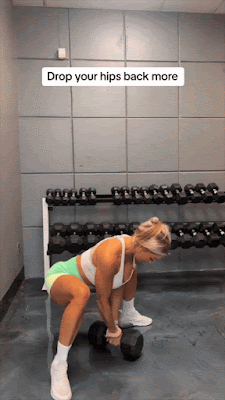Unlock Your Strength: The Ultimate Upper Body Workout for Women at the Gym
A well-structured upper body workout is essential for women aiming to build strength, improve muscle tone, and enhance overall fitness. Whether you're a beginner or a seasoned gym-goer, having a comprehensive upper body workout routine can help you achieve your fitness goals effectively. In this article, we'll explore the best upper body workout for women at the gym, including key exercises, tips for success, and the benefits of incorporating strength training into your fitness regimen.
Key Exercises:
1. Bench Press: This compound movement targets the chest, shoulders, and triceps. Start with a barbell or dumbbells, lower them to chest level, then press them back up to the starting position.
2. Pull-Ups/Assisted Pull-Ups: Pull-ups engage the back, biceps, and shoulders. Use an assisted pull-up machine or resistance bands if needed, and focus on pulling yourself up until your chin clears the bar.
3. Shoulder Press: This exercise targets the deltoid muscles of the shoulders. Sit or stand with a barbell or dumbbells held at shoulder height, then press them overhead until your arms are fully extended.
4. Bent-Over Rows: Bent-over rows work the upper back, biceps, and rear deltoids. Hold a barbell or dumbbells with an overhand grip, hinge at the hips, and row the weight toward your torso, keeping your back flat.
5. Tricep Dips: Tricep dips effectively target the triceps. Use parallel bars or a bench, lower your body by bending your elbows, then press back up to the starting position.
Tips for Success:
1. Warm-Up: Always start your workout with a dynamic warm-up to increase blood flow and prepare your muscles for exercise.
2. Focus on Form: Proper form is crucial for preventing injuries and maximizing results. Concentrate on maintaining good posture and executing each exercise with controlled movements.
3. Gradually Increase Weight: As you become stronger, gradually increase the weight or resistance to continue challenging your muscles and promoting growth.
4. Rest and Recovery: Allow adequate rest between sets and workouts to allow your muscles time to recover and grow stronger.
5. Stay Consistent: Consistency is key to seeing results. Aim to perform your upper body workout at least two to three times per week to build strength and muscle tone over time.
Benefits:
1. Increased Strength and Muscle Tone: Regular upper body workouts help build strength and definition in the chest, back, shoulders, and arms.
2. Enhanced Functional Fitness: A strong upper body improves your ability to perform daily tasks and activities with ease.
3. Boosted Metabolism: Strength training increases muscle mass, which can lead to a higher resting metabolic rate and improved calorie burn.
4. Improved Bone Health: Resistance training helps maintain bone density and reduces the risk of osteoporosis as you age.
5. Enhanced Confidence: Building a strong and sculpted upper body can boost self-confidence and body image.
Incorporating an effective upper body workout into your gym routine can yield numerous benefits for women, including increased strength, muscle tone, and overall fitness. By incorporating key exercises, focusing on proper form, and staying consistent with your workouts, you can achieve your fitness goals and unlock your full potential. With dedication and perseverance, you'll soon experience the transformative power of strength training for the upper body.
.gif)





.gif)













